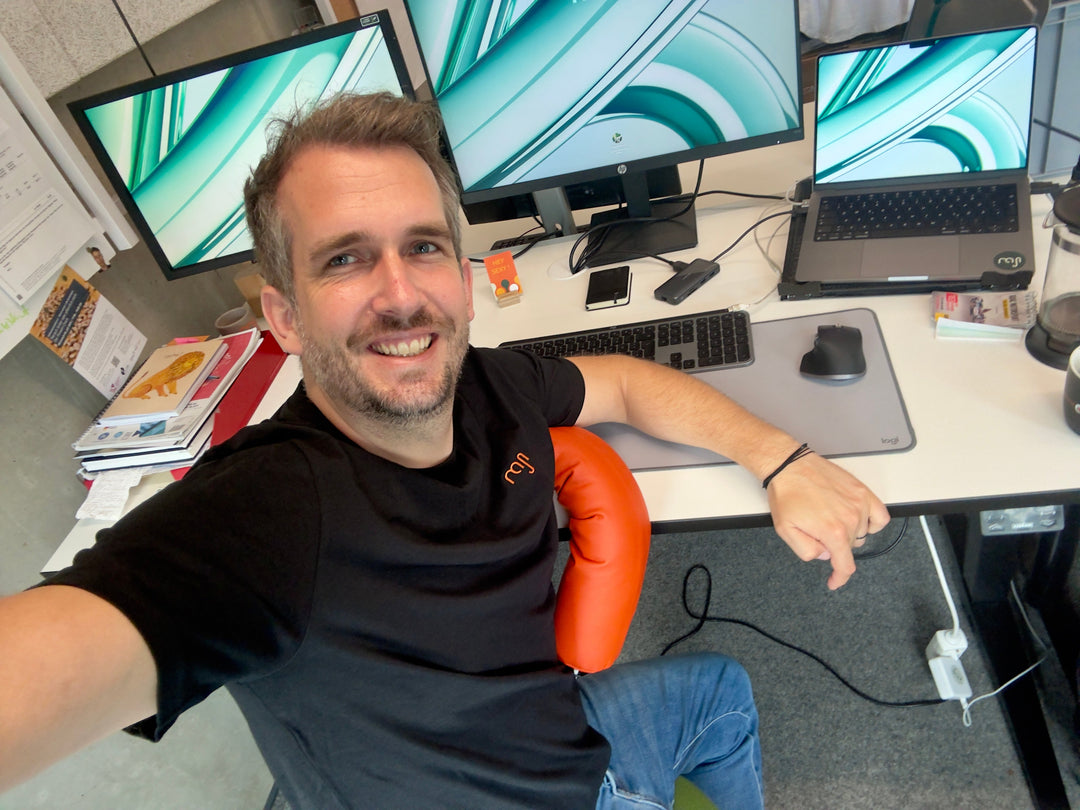Optimal workplace design: hints from an interior designer

Introduction
A workspace is much more than just a desk and a chair – it is the space where we spend a large part of our day, develop ideas, and work productively. Yet, we often underestimate how much our environment influences our concentration, motivation, and even our health.
An ergonomic workspace means not only sitting correctly but also consciously designing the entire room concept: lighting, colors, materials, and storage solutions play an equally important role as choosing the right furniture. Ergonomic working not only provides comfort but also significantly boosts performance and well-being. As an interior designer, I know that a well-planned home office can be just as effective and inspiring as a professional office.
Here are my best tips to transform your workspace into an inspiring and functional environment while maintaining a positive association with your work setting:
1. Ergonomics First: The Right Desk and Chair
An ergonomic workstation is essential to avoid long-term back pain, tension, and posture problems. The right seating position not only ensures physical comfort but has also been proven to enhance concentration and productivity.
• Height-Adjustable Desk: A height-adjustable desk allows you to work ergonomically while sitting and standing – perfect for a dynamic workday. Regularly changing positions relieves the back, stimulates blood circulation, and helps prevent tension. For optimal ergonomic posture, your arms should rest comfortably at a 90-degree angle on the desk surface.
• Ergonomic Chair: A high-quality, ergonomic office chair is indispensable, whether in a home office or a professional setting. It should have adjustable seat height, a flexible backrest, and lumbar support. A chair that moves dynamically promotes activity and prevents static sitting.
• Screen Position: The correct screen height is crucial for ergonomic work. The top of your monitor should be at eye level so that your gaze naturally tilts slightly downward. A distance of about one arm’s length ensures a relaxed head posture. For users with multiple monitors, both screens should be ergonomically aligned.
2. Lighting: Natural Light and Targeted Light Sources
Proper lighting is an essential component of an ergonomic workspace. It not only affects your mood but also influences concentration and performance.
• Maximize Natural Light: A workspace near a window provides natural light, which enhances concentration and relieves eye strain. In a home office, the desk should ideally be positioned to the side of the window to avoid glare. Natural light is a key factor for ergonomic work and creates a pleasant room atmosphere.
• Direct Light for Focused Work: A desk lamp with an adjustable arm and a glare-free light cone provides targeted illumination at your ergonomic workstation. Point lighting is especially important for detailed tasks.
• Indirect Lighting for Atmosphere: Indirect lighting with warm white light creates a pleasant ambient atmosphere. For focused work in a home office, neutral white light is recommended as it promotes concentration and is gentle on the eyes.
3. Colors: Impact on Mood and Productivity
Colors are not just a design element but also greatly influence our mood and productivity – even when working ergonomically from a home office.
• Blue & Green for Calm and Focus: Blue tones have a calming effect and promote analytical thinking. Green creates a balanced atmosphere and is particularly suitable for creative workspaces. These colors support ergonomic work by creating a relaxed environment.
• Yellow & Orange for Energy and Creativity: Warm colors like yellow and orange provide energy and stimulation, which is especially helpful in meeting or creative rooms. They bring vibrancy and foster an inspiring work atmosphere.
• Neutral Tones for Harmony: Colors like white, beige, and gray appear neutral and are non-distracting. They are ideal for backgrounds, as they convey structure and calm. Accents in bold colors help define areas and add visual highlights.
4. Storage and Organization: Less Clutter, More Focus
A tidy, ergonomic workspace creates structure and minimizes distractions.
• Open Shelving for Clarity and Inspiration: Shelves offer storage and the opportunity to display books, folders, or decorative elements. A combination of open and closed spaces creates order and structure.
• Storage Solutions for Small Items: Drawer units, boxes, and baskets help maintain a clutter-free workspace – important both in the office and at home.
• Cable Management for a Clean Setup: Cable organizers and wireless devices reduce cable clutter and support a minimalist, ergonomic working environment.
5. Personality and Inspiration: Boosting Well-Being
An individualized workspace increases motivation and creates a pleasant work environment.
• Plants for a Pleasant Atmosphere: Indoor plants improve air quality and reduce stress – a natural feel-good factor for a home office ergonomic setup.
• Adding Personal Touches: Photos, artworks, or inspiring quotes add a personal note and boost motivation.
• Acoustic Elements for Quiet: Carpets, curtains, or sound-absorbing elements enhance room acoustics and create a calm environment for ergonomic work.
Conclusion: Your Workspace as the Perfect Balance of Function and Design
An ergonomic workspace is more than just a place to work – it is an investment in health, well-being, and productivity. The right combination of ergonomics, lighting, colors, organization, and personal touches creates an inspiring environment that not only prevents physical discomfort over time but also enhances concentration.
Whether in the office or in a home office, a thoughtfully designed workspace enables ergonomic work at the highest level and provides the ideal foundation for creativity and long-term success in your workday.
If you have any questions, feel free to reach out.







Leave a comment